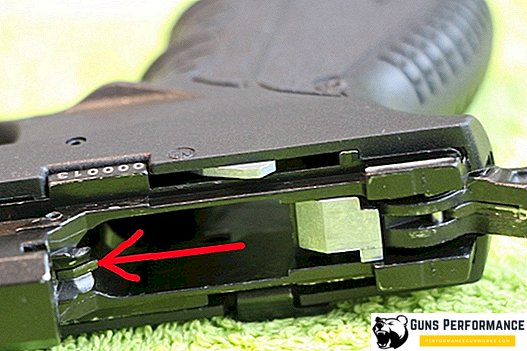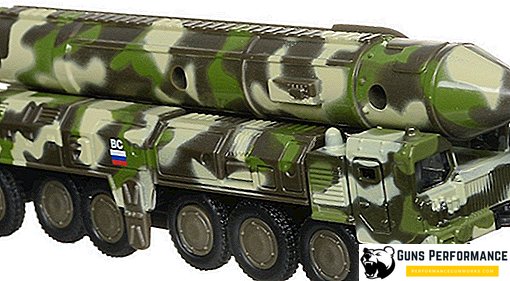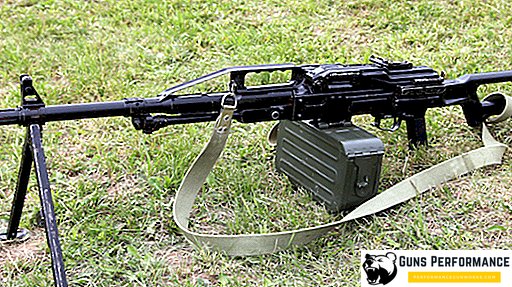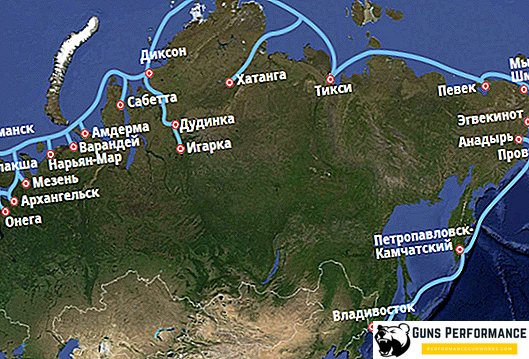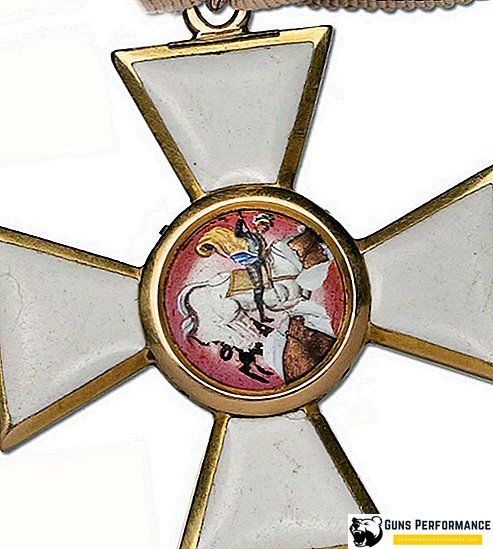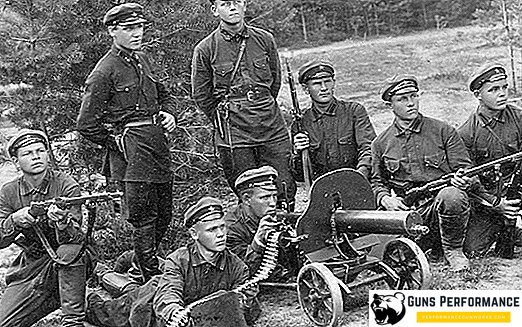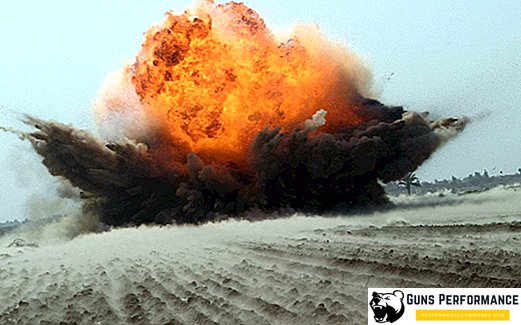
Trotyl (trinitrotoluene, 2,4,6-trinitrotoluene, tol, TNT) is a type of blasting explosive (BB), first synthesized by the German chemist Vilbrand in the distant 1863.
Nowadays, TNT is the No. 1 explosive in the world; it is not only used more often to equip various ammunition, but it is also used as an equivalent for other types of explosives and even nuclear warheads.
TNT is not the most powerful explosive, according to this indicator it is inferior to both hexogen, and picric acid, and even more so to nitroglycerin. But thanks to the optimal combination of sufficient power, low sensitivity, low cost and the ability to handle casting, it has become the most popular explosive used for military purposes.

Story
This explosive was first synthesized by the German scientist Wilbrand in 1863, but this discovery was forgotten for several decades. Remembered him only at the end of the XIX century. Work on the start of mass production of TNT is largely associated with the name of another well-known German chemist - Caste. This man was the largest explosives specialist of his time. It was under his leadership in 1905 that the first one hundred tons of trinitrotoluene were obtained in Germany. Naturally, all the work on the new explosives were strictly classified, so she was given a meaningless name - "TNT".
However, soon the secret of the new explosive was discovered by Russian chemists, and TNT began to be produced in Russia. After some time, the production of this explosives began in other countries.

Already in the First World War, all the countries participating in the conflict produced a huge amount of TNT, which was measured in thousands of tons. Although, at this time, picrinic acid still competed with trinitrotoluene. But by the beginning of the next world conflict, tol became the most common explosive in the world.
In the United States alone, and only in 1945, more than one million tons of TNT was produced.
Chemical and physical properties
TNT is a colorless or yellow crystalline substance. Its density is 1,663 g / cm3, the density of cast TNT - 1.54-1.59 g / cm3. The chemical formula of this explosive is C7H5N3O6.
TNT does not react with solids, it is practically insoluble in water, does not change its explosive properties after wetting with water or in a melt. It burns with a yellow flame with a high emission of soot. Under the influence of sunlight darkens.

Well reacts with water and alcohol solutions of alkalis.
TNT is a product of exposure to toluene acids, nitrous and sulfuric. As a result of several reactions, a primary product is obtained - the so-called flake TNT, which can be pressed, ground to a powder, or melted. The last property of this explosive is especially valuable. By melting, you can receive charges of any shape, weight, cut, drill, fill the desired cavity.
Now directly on the explosive properties of TNT: the explosive transformation energy of this explosive is 1010 kcal / kg, its detonation speed is 6900 m / s, the blasting is 19 mm, and the high explosiveness is 285 cm3.
TNT possesses an acceptable level of sensitivity, it does not explode from being shot through by a bullet, from the action of a spark or flame. The explosion of TNT is guaranteed to occur from standard blasting caps or fuses.

Features of use
TNT is actively used in military affairs, and in industry. Moreover, it is used in various forms, both in granulated (granulotol), and in pressed and cast form.
Other types of explosives may be more powerful than TNT, but, as a rule, they have certain disadvantages. Hexogen, for example, is more sensitive, melinite reacts quite actively with metals and is toxic, and ammonium nitrate explosives are hygroscopic. Dynamite, in general, has such a high sensitivity that it is poorly suited to equip ammunition.

The main advantage of TNT is the safety of working with it, and this is true for all stages of its use. A trinitrotoluene sausage is no more dangerous than a cheese head. In addition, this explosive is well preserved and retains its properties for decades. You can dig up the shell of the war and the trotyl contained in it will be quite suitable for use. The guaranteed shelf life of this substance is twenty years.
In addition to all of the above, you can add that this explosive is well fused with other types of explosives. Most often for equipment of ammunition mixtures based on TNT are used. They largely eliminate the disadvantages of different types of explosives that make up their composition. A mixture of TNT and hexogen lowers the sensitivity of the latter, making the handling of explosives safer. In a mixture with ammonium nitrate explosives, TNT increases chemical resistance and reduces the hygroscopicity of the latter.

Currently, pure TNT is practically not used. Here are examples of TNT-based explosives:
- Tga. A mixture of TNT, RDX and aluminum;
- Octol. Alloy containing 77% oxogen and 23% TNT;
- Alumotol, granatol A, irig. Mixtures consisting of tola and aluminum powder in different proportions.
At the present time in different countries of the world are searching for an explosive substance that could replace the TNT. Moreover, the criteria for selecting a candidate for the role of "explosive No. 1" is not only its power, but also the low cost of production, as well as the safety of working with it. So, for example, Americans, since the beginning of this decade, have been changing TNT for a new type of explosive in large-caliber shells - the IMX-101.

TNT has another curious property, this substance is quite a strong anti-fungal agent. Previously, it was even used in medicine, trinitrotoluene was part of fairly well-known drugs. But because of the high toxicity of TNT out of use. However, even today soldiers often make various artisanal antifungal agents from TNT.
TNT equivalent
An extremely important term for an explosive business is associated with trinitrotoluene, the so-called TNT equivalent. It calculates the power of explosives and the explosions themselves. TNT equivalent is expressed in the amount of TNT, which is necessary for an explosion of equal power. In the news, you can often hear reports that the explosion of any ammunition was equal to the detonation power of 300 kg of TNT.
With this measure, the power is estimated not only the explosions of conventional types of explosives, but also of nuclear weapons. True, to estimate the power of such devices, not a ton of TNT is needed, but tens and hundreds of thousands of tons of this explosive. For example, a nuclear bomb with a capacity of 18 kilotons in TNT equivalent was dropped on the Japanese city of Hiroshima. This means that the explosion of the “Malysh” air bomb corresponded in its energy to an explosion of 18 thousand tons of trinitrotoluene.

In addition, the power of TNT is used as an equivalent to determine the strength or weakness of other types of explosives. If we take it as a unit, then the power of RDX, for example, will be from 1.3 to 1.6. That is, it is almost one and a half times stronger than trotyl. In the case of gunpowder, this coefficient is 0.55-0.66, and in oxygenate, 1.7.


